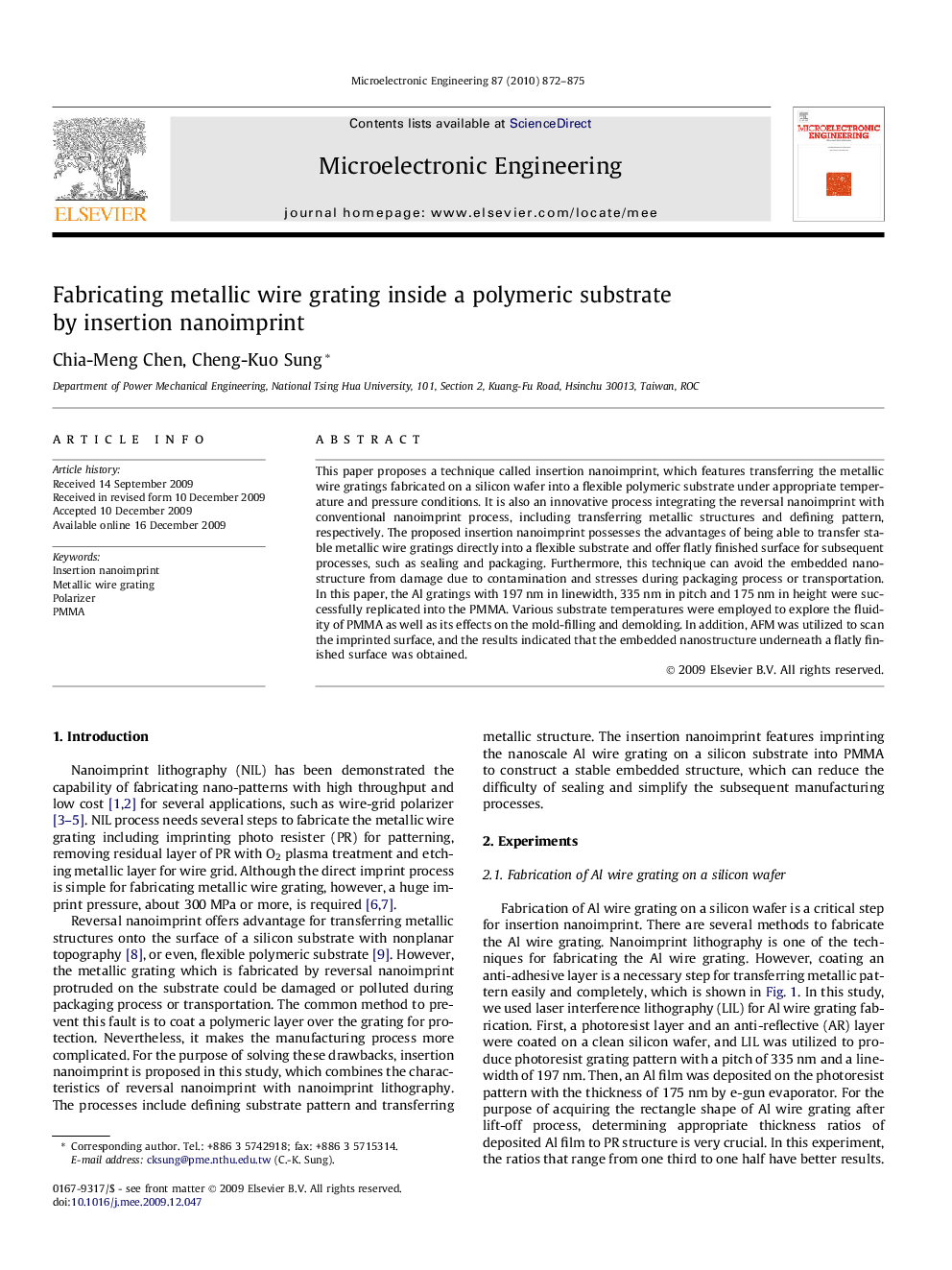| Article ID | Journal | Published Year | Pages | File Type |
|---|---|---|---|---|
| 539750 | Microelectronic Engineering | 2010 | 4 Pages |
This paper proposes a technique called insertion nanoimprint, which features transferring the metallic wire gratings fabricated on a silicon wafer into a flexible polymeric substrate under appropriate temperature and pressure conditions. It is also an innovative process integrating the reversal nanoimprint with conventional nanoimprint process, including transferring metallic structures and defining pattern, respectively. The proposed insertion nanoimprint possesses the advantages of being able to transfer stable metallic wire gratings directly into a flexible substrate and offer flatly finished surface for subsequent processes, such as sealing and packaging. Furthermore, this technique can avoid the embedded nanostructure from damage due to contamination and stresses during packaging process or transportation. In this paper, the Al gratings with 197 nm in linewidth, 335 nm in pitch and 175 nm in height were successfully replicated into the PMMA. Various substrate temperatures were employed to explore the fluidity of PMMA as well as its effects on the mold-filling and demolding. In addition, AFM was utilized to scan the imprinted surface, and the results indicated that the embedded nanostructure underneath a flatly finished surface was obtained.
